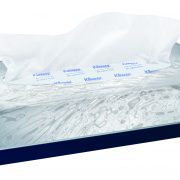Keeping Your 4WD In Tip-Top Shape
If you’re the proud owner (or proud owner to be) of a 4WD, then you’ll likely know that these beauties generally aren’t so cheap to own or to purchase in the first place. With this in mind, it’s practical to make the best efforts you can at maintaining your four-wheeled pride and joy. Of course, you’ll want to get the most use out of it that you can, for all those adventures off-road and otherwise. Here are a few things you may want to consider to get the best out of your purchase.
Remember your pre-start checks
Underestimating the importance of pre-start checks can be quite the error when it comes to the 4WD; it’s about spotting those little issues before they turn into big ones. Ensure you take a good look over your vehicle to find any signs of damage; this could be your lights, mirrors, wheels or tyres- check it all. Also, make sure that you inspect each tyre carefully for inflation, it’s handy to always have a tyre pressure gauge close by. While you down there, take a look at the wheels so you can find out if the wheel nuts are properly secure (and make sure that you haven’t lost any)!
After this, you can open up the bonnet and make sure all is well with the engine bay. If you’re not clued up on where (and what) everything is inside your car then grab your owners manual to help you to see what’s what. You’ll want to see if the windscreen fluid and the coolant is full plus the clutch and brake fluid. Have a look at your engine oil levels and the tension of your belts to ensure all is good here. Don’t forget to inspect underneath your vehicle for any signs of leaks too.
Tyre pressure is key
It’s important not to overlook the quantity of air that you run in your 4WD tyres. This is because if you are using incorrect tyre pressure, this means that your tyres are going to wear much faster (and we don’t want that)! You’re also going to wind up with poor traction if this is the case. The key is to pick the right pressure dependent on the different types of terrain that you are going to be driving on. If you are simply driving on the road then you can just follow the recommended tyre pressures that can be found on your tyre placard (This should generally be between 32 and 38psi depending on your vehicle.)
If you are driving on sand, you will most likely have heard that you will need to drop the air pressure in your tyres- you can drop it to around to between 18 and 26psi. By lowering the pressure, you will be improving your flotation while also giving yourself momentum to stay on top and not get stuck! Sand can end up building up a lot of heat in your tyres so you might find that you need to give your vehicle a few driving breaks. If you are driving on rocks, you can also reduce your tyre pressure and ensure that you’re not going at too much of a speed.
Perhaps you find yourself driving through mud? In this case, if the foundation of the mud is quite firm then it’s okay to stick with higher air pressures, yet if it’s deep and sinking mud then low air pressures are a better bet! Although driving through mud can be frankly- a lot of fun, it’s actually pretty bad for your 4WD. This is because it gets stuck inside everything and is hard to get rid of! It can block your radiators and is also corrosive. (If you can resist- back away from the mud!)
Don’t skip on the service
You’ll know that getting your vehicle serviced is a must, yet not all services are the same, and you’ll want to find one that’s both quality and suited to your needs. If you have a look at your 4WD manual, you should be able to find the info you need that is going to help you to know which is the right kind of servicing and schedule for your vehicle. You can consider what your service interval is and go with that. However, you might want to think about more frequent services if you know that you have been working your 4WD pretty hard overall, driving on lots of challenging terrains or perhaps towing? You’ll want to know that your precious wheels are in good hands with your 4WD servicing so make sure that you choose a reputable source to give you the standards you need.
Upkeep on the differentials
Your differentials are the sets of gears that enable the wheels of your 4WD to operate at different speeds. The differentials aim engine power at the vehicle wheels and also act as the final gear reductions, slowing up the transmission speed once more before it meets the wheels. You need to make sure all of the different components of your differentials are lubricated to keep it in good working order. You can have a mechanic change your differential oil approximately every 30,000 to 60,000 miles.
Ditch the rust
Your 4WD adventures (though fun) may have already exposed your vehicle to some damage. If you find and apply a good rust prevention treatment that’s one less thing for you to worry about! You can use, for instance, underbody rust proofing sprays which can stop rust from forming to begin with. You could also choose to opt for electronic rust prevention. These work by using systems that aim to replace lost electrons in steel, with a negative charge, and thus decreasing the rate of corrosion.
Your servicing needs will depend on the type of 4WD vehicle you have and the type of driving you’re doing, so it’s just all about assessing what your needs are. While you’ll want to leisurely take those off-road jaunts and have a blast; it’s definitely worth your time to give your vehicle a little TLC!









